Closed treatment MMF
1. Treatment
Most condylar fractures can be treated closed.
Management of condylar fractures is a controversial topic. A variety of management techniques have been described in the medical literature.
The surgeon must exercise his or her own judgment on how to treat the specific fracture based on his or her own experience, the nature of the fracture, concomitant injuries and patient expectation and wishes.
Closed treatment options
Closed treatment for condylar fractures may involve the following:
- A period of MMF
- Functional therapy (immediate function with elastics)
- A combination of the above
This procedure is typically performed with the patient placed in a supine position.
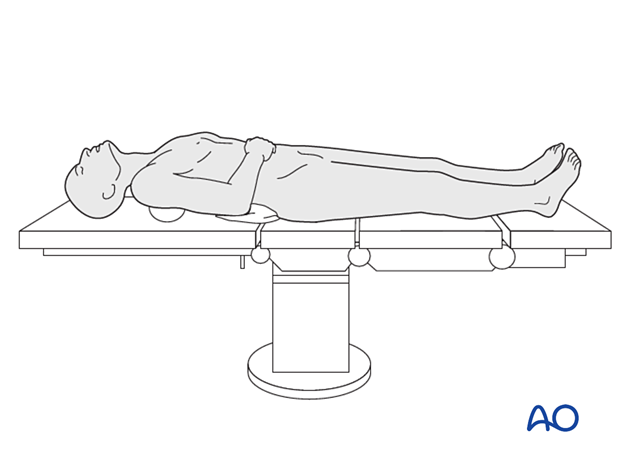
Closed treatment - MMF
Although some surgeons favor no MMF for condylar fractures but prefer immediate function with training elastics to rehabilitate the occlusion, many surgeons prefer to use MMF for various durations.
The recommended period of MMF varies from 7 days to 6 weeks. The younger the patient is, the shorter the period of MMF in order to prevent the development of TMJ ankylosis. Therefore, in children, 7–10 days is the maximum usually recommended.
However, in adults, some surgeons recommend 4-6 weeks of MMF in the case of very low fractures (having a similar biological behavior to ramus fractures). In general, the lower the fracture, the longer the period of MMF recommended.
All surgeons who prescribe periods of MMF advise that this is followed by several weeks of functional treatment.
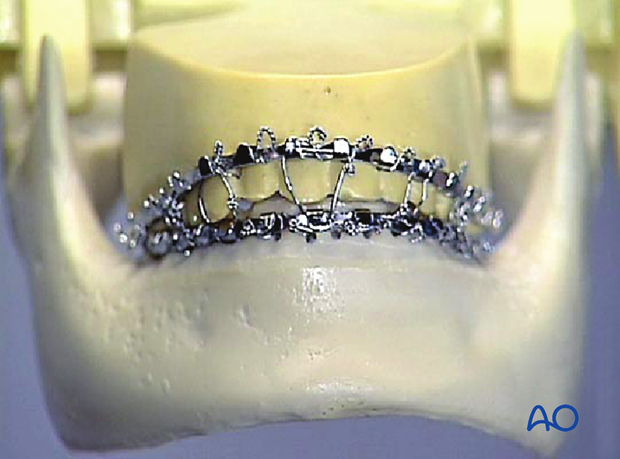
Closed treatment – functional therapy
Functional treatment is the use of guiding elastics and a regimen of active mobilization. Some authors explain that the period of active movements with the elastic guidance could be for as long as 3 months. The guiding elastics are initially used full time and the patient is slowly weaned off them. Any elastics are removed for eating.
After a few weeks, many patients only require them at night and during the day they can be omitted. The purpose of guiding elastics is to allow the patient to bite into their proper occlusal relationship. As few elastics as necessary should be used because another goal is the maintenance of good mobility of the jaw.
Removal of the arch bars, MMF screws etc should be delayed until the patient's occlusion has normalized without the use of elastics.
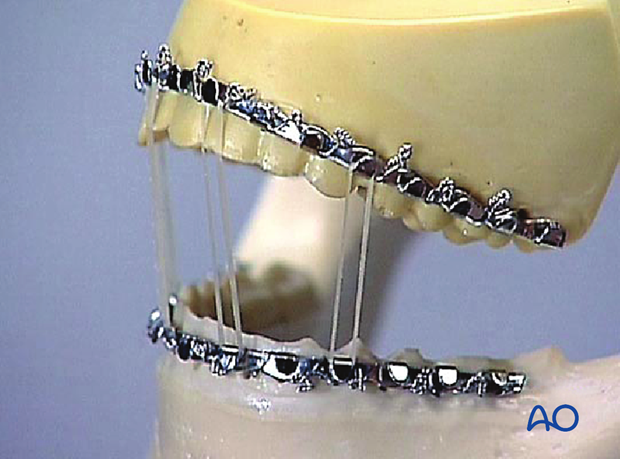
2. Case Example
X-ray shows minimally displaced left condylar neck fracture.

Photograph taken after placement of arch bars shows the mandible shifts left and posteriorly due to loss of condylar support.
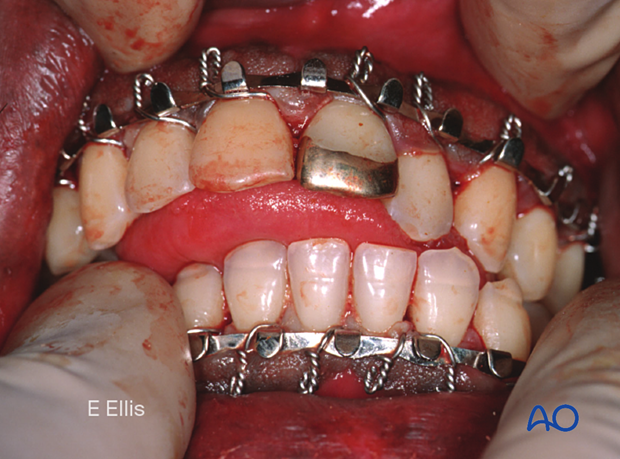
No MMF was used. Two light elastics were all that was necessary to provide anterior support of the left mandible so that the patient could bite into normal occlusion.

The patient was weaned off the elastics. This photograph taken 6 weeks after implementation of the elastics and shows restoration of the normal occlusal relationship.

This photograph demonstrates that the patient was functionally rehabilitated to a wide interincisal opening.

Panoramic x-ray taken at 6 weeks shows continued alignment of the condylar process fracture.
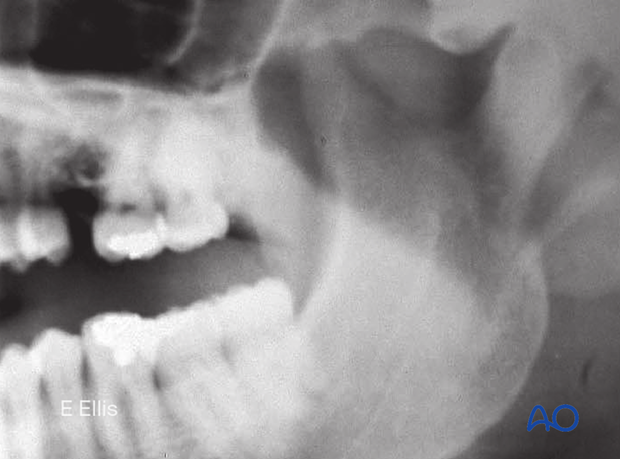
3. Aftercare following closed treatment of condylar process and head fractures
Follow-up
It is imperative that the occlusal relationship and mandibular function be assessed early and on a regular basis. The patient is evaluated at 1 week to verify the occlusion and to assure adequate performance of functional rehabilitation exercises. The frequency of follow-up will largely be based on the findings of the 1-week appointment. Typically, if the patient is doing well at one week, they will not be seen for 2 more weeks. The necessity and frequency of future appointments will be based upon the findings from this appointment and at the discretion of the treating surgeon.
Removal of arch bars and MMF screws
Removal of the arch bars, MMF screws etc should be delayed until the patient's occlusion has normalized without the use of elastics.
Pediatric condylar fractures
For pediatric condylar fractures, the parents should be advised that the fracture can affect future mandibular growth in some rare cases. It is prudent to recommend they have their family dentist monitoring mandibular growth and refer to a specialist if aberrant growth is noted.
Basic postoperative instructions
DietThe patient can eat whatever is comfortable. If solid foods cause pain, the patient will self-limit their diet to softer foods. There is no contraindication to taking solid foods from the standpoint of their fracture.
The presence of the arch-bars and any elastics makes appropriate oral hygiene procedures a difficult task. A soft toothbrush (dipping in warm water makes it softer) should be used to clean the surfaces of the teeth and arch-bars. Any elastics are removed for oral hygiene procedures. Chlorhexidine oral rinses should be prescribed and used at least 3 times each day to help sanitize the mouth. With more gross debris, a 1:1 mixture of hydrogen peroxide (0.25% /chlorhexidine (0.12%) can be used. The bubbling action of the hydrogen peroxide helps remove debris. A Waterpik® is a very useful tool to help remove debris from the wires.













